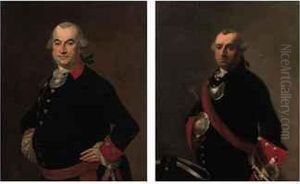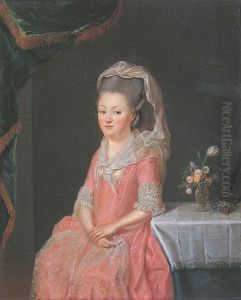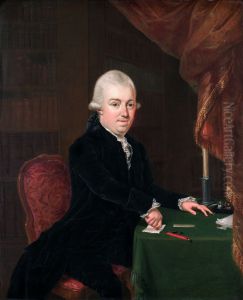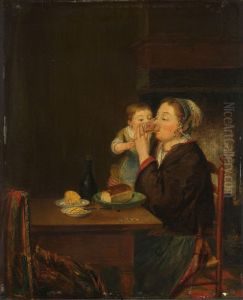Louis Bernard Coclers Paintings
Louis Bernard Coclers was a distinguished Dutch-Flemish portrait painter and engraver, born in 1740 in Liège, which was then part of the Prince-Bishopric of Liège and now lies in modern-day Belgium. His artistic journey began under the guidance of his father, Jean-Baptiste Coclers, who was also an artist. This early exposure to art within his family set the stage for Coclers’s lifelong dedication to the arts. He further honed his skills in Paris, where he studied under the prominent French painter and engraver, Jean-Baptiste Perronneau, known for his exquisite pastel portraits. Coclers's education in Paris was pivotal, enriching his artistic style with French elegance and a keen sense of realism.
After his studies, Coclers worked in various cities across Europe, including Lyon, where he became known for his portraits and genre scenes. His works from this period reflect a nuanced understanding of character and a meticulous attention to detail, qualities that garnered him considerable acclaim. In the latter part of the 18th century, Coclers returned to Liège, where he continued to produce portraits, but also ventured into printing and publishing, showing his versatile engagement with the arts. The French Revolution brought turmoil to his career, as it did for many artists of the time. Coclers was forced to relocate to Maastricht and then to Amsterdam, seeking patronage and opportunities to continue his work amidst the changing political landscape.
Coclers’s art is characterized by its warmth and the psychological depth of his portraits. He had a particular talent for capturing the personality and inner life of his subjects, making his portraits highly sought after. Despite the challenges he faced later in life, including financial difficulties and the need to adapt to new environments, Coclers remained dedicated to his art until his death in 1817. Today, his works can be found in various museums, attesting to his enduring legacy as a master portraitist of the 18th century. His contributions to Dutch and Flemish art are particularly notable for their blend of regional characteristics with the broader European artistic movements of his time.



